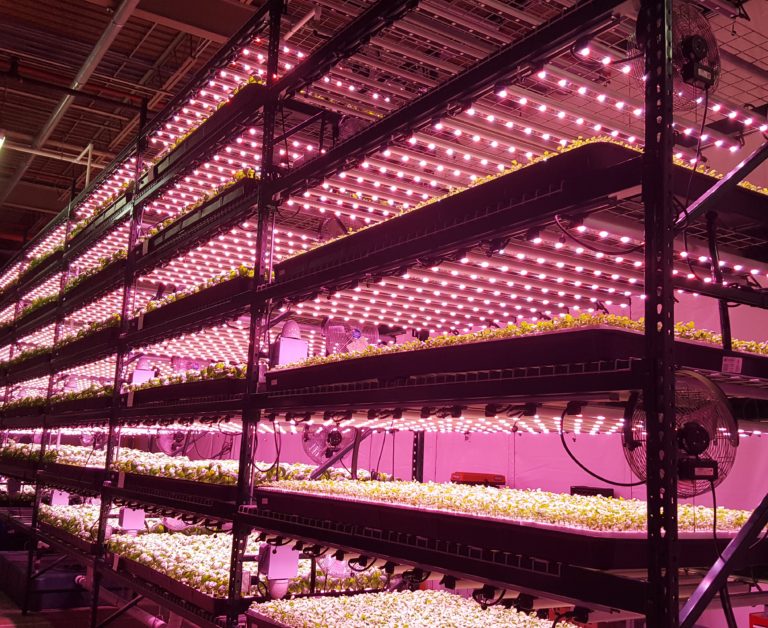What will it cost?
That’s a very common question among indoor growers.
The controlled environment agriculture (CEA) movement is advancing. More cultivators are seeing the many benefits of growing indoors, and the high yields are definitely at the top of the list. But achieving great yields and running a profitable operation requires an investment. One of the biggest investments you will have to make as a grower relates to your climate control system.
HVAC system cost is one of the most important considerations growers have to make during the planning and budget development phases. However, “What will it cost?” is a loaded question with no single answer. Each operation’s HVAC system cost will depend on a number of factors such as cultivator preferences, required design, desired climate parameters, plus precision and efficiency needs.

While using rules of thumb when trying to build a rough idea of the HVAC system you want and its cost is not a bad idea, relying on these rules is unacceptable when it comes to the actual execution. The same can be said for relying on past experience to determine how much an HVAC system will cost you. Looking back is good as long as you know that no two facilities are the same and so what worked for one won’t work for the other.
Answering the HVAC system cost starts with determining the direct load on the system and establishing system size. From there, you’ll also need to look at other details such as design to get a sense of how much you’ll need to get a robust HVAC system.
1. Size and direct load on the system
In a small grow space, a couple of dehumidifiers may suffice. A couple of fans will also do, and it’s not such a big deal if they use a bit more energy than you need. However, with bigger facilities, there’s more at stake. For instance, more plants are at risk and the operating costs can really add up if you have some energy inefficiencies. Put simply, things that you could overlook and mistakes that wouldn’t matter on a small scale can have devastating effects on a bigger operation.
When deciding on HVAC system cost, the first thing you need to look at is the size of the facility that needs cooling and dehumidification. The size of the space will help you identify the direct load on your HVAC system, i.e. the amount of dehumidification and cooling required at any given time. A fatal mistake would be to buy a cheap HVAC that’s small and unable to handle the grow space’s load.
Since the primary functions of an HVAC system are to cool and dehumidify, we can’t talk about loads without looking at the sensible and latent loads of an HVAC system.
HVAC sensible and latent loads
In CEA HVAC, loads are the energy (humidity and heat) that is continuously stored in the air in a grow space. Sensible capacity refers to the capacity required to lower the temperature. Latent capacity, on the other hand, refers to the capacity to remove moisture from the air.
The sensible and latent capacities are two fundamentals you have to consider when selecting HVAC equipment. Consequently, HVAC systems are sized around the calculated sensible heat ratio (SHR). It’s important to understand the SHR of the space to get the equipment sized correctly.
The typical sensible heat ratio of an office building falls around 0.85. That means for 20 tons of cooling, there are only 3 tons available for latent load. This load distribution is the basis for how standard, “off-the-shelf” HVAC equipment is designed. Many of the early cannabis cultivation facilities applied these standard, commercial HVAC units as the primary means of cooling and dehumidification. Not surprisingly these facilities were plagued by increasing humidity and wild temperature swings.
Why?
Cultivation facilities, due to irrigation and resulting transpiration, can have a sensible heat ratio around 0.50. That means the “off-the-shelf” 20-ton unit will be 7 tons SHORT on latent capacity. To properly take care of these facilities, a more complex design must be used and this will affect the HVAC system cost.
To effectively size an HVAC system and determine its true cost, you must understand whether the sensible and latent loads will be satisfied by your HVAC, i.e. you need to know the peak load your facility will experience to be able to determine the load your HVAC system must handle when your operation is demanding the most out of it. This way, you can determine the cost of the system accordingly.
When measuring the loads, you’ll also want to consider the load of grow lighting, CO2 burners and other electrical equipment in the grow space. All these elements will contribute to the size of the HVAC system you need. The size, in turn, will determine the cost of your HVAC.
Related content: New to sensible load, latent load and other HVAC terms? Check out this guide to key HVAC terms | And speaking of sizing, check out how to size an HVAC system for optimal grow room ventilation
2. Design
CEA is a relatively new phenomenon and so growers tend to rely on the traditional way of operating. While this could provide a reasonable way of doing things for smaller grows, cultivation on a larger scale requires well thought out, specially designed and fully-engineered solutions. This distinction will affect your HVAC system cost. Compared to a traditional, off-the-shelf HVAC solution, a specially designed solution will likely cost more.
And why does design matter?
- Energy consumption. Indoor grows are extremely energy intensive. Not only do they need powerful HVAC systems to keep temperature and humidity within the optimal ranges, but they require specialized lighting that uses lots of energy as well. Robust HVAC design goes a long way in ensuring that the system is as energy-efficient as possible.

- Humidity and temperature. Too much or too little humidity, plus temperatures that are too high or too low will spoil the crop. Indoor grow spaces must be set with specific humidity and temperature ranges that vary depending on the crop – this requires that HVAC designers specifically design a system with precision in mind.
Additionally, when indoor cultivation involves cannabis, HVAC design also plays a major role in odor management. A well-designed system will help solve, or at least mitigate, grow space odor problems efficiently. In light of this, efficiency is another factor that will help you determine HVAC system cost.
Further reading: Here’s a handy quick-start guide to some commercial grow room HVAC design challenges.
3. Efficiency
Efficiency is vital in the grow room, and a lack of it can be costly. For example, energy inefficiencies remain a big problem in the CEA industry, particularly in cannabis cultivation. These inefficiencies can lead to high operational costs that eat into an operation’s profitability.
How efficient an HVAC system will also play a part in determining its cost. Harvest Air™, for instance, does not rely on brute force to cool and dehumidify. The system also uses a rotary heat exchanger that is 85% efficient at indirect air-to-air economization. This high efficiency helps cut operating costs.
Of course, the efficiency provided by such a solution will likely translate into a higher HVAC system cost compared to a traditional solution with no efficiency to speak of. Nonetheless, it’s important to remember that while such a specialized system may cost more initially, the cost savings you get due to higher efficiencies will offset the initial cost and help you achieve a good ROI in the long run.
4. Setup and installation
HVAC system costs don’t start and end with procuring the system. You also have to think about how much it will cost to set up the HVAC. To save on HVAC installation, consider working with HVAC professionals who will help you cut costs. For example, some companies are established with efficient setup and installation processes, such that they can offer price incentives, all without compromising on quality.
5. Maintenance
Long-term costs are easy to overlook when considering the initial cost of something. But consider this – one system may be cheap to buy, but difficult to maintain, while another has a higher initial cost but is easier to maintain.
Would you rather have a $250,000 HVAC system that costs $200,000 to maintain every year or a $500,000 system that requires $150,000 to maintain annually? With the former, maintenance costs make up 80% of the initial cost, while they only make up 30% of costs with the latter. Although these figures are just for illustration purposes, you can see that the differences in maintenance costs can do a lot for your profitability.
When considering HVAC system cost, take note of the system’s maintenance requirements. Will you have to contend with a million moving parts and complex components or will the system be easy to maintain.
HVAC system cost: How much will the system be?
How much will it cost?
As you may have already seen, there’s no way of knowing HVAC system cost without considering all the various unique factors that affect your operation. But while the exact cost of your HVAC system will depend on several factors, we hope that this article will help you arrive at a system cost that helps you grow your business.
If you’re ready to explore your options, consider getting in touch with an HVAC firm with a solid track record of providing energy, process and capital-efficient HVAC systems. We’ll help you with everything from designing to setting up and running an efficient system.
The best part? Our clients knock 25% or more off their construction costs, build faster than the competition, and reduce operating expenditure by 50-75%.
Contact us today to discuss how we can help you build an HVAC system that helps you get the most out of your operation.